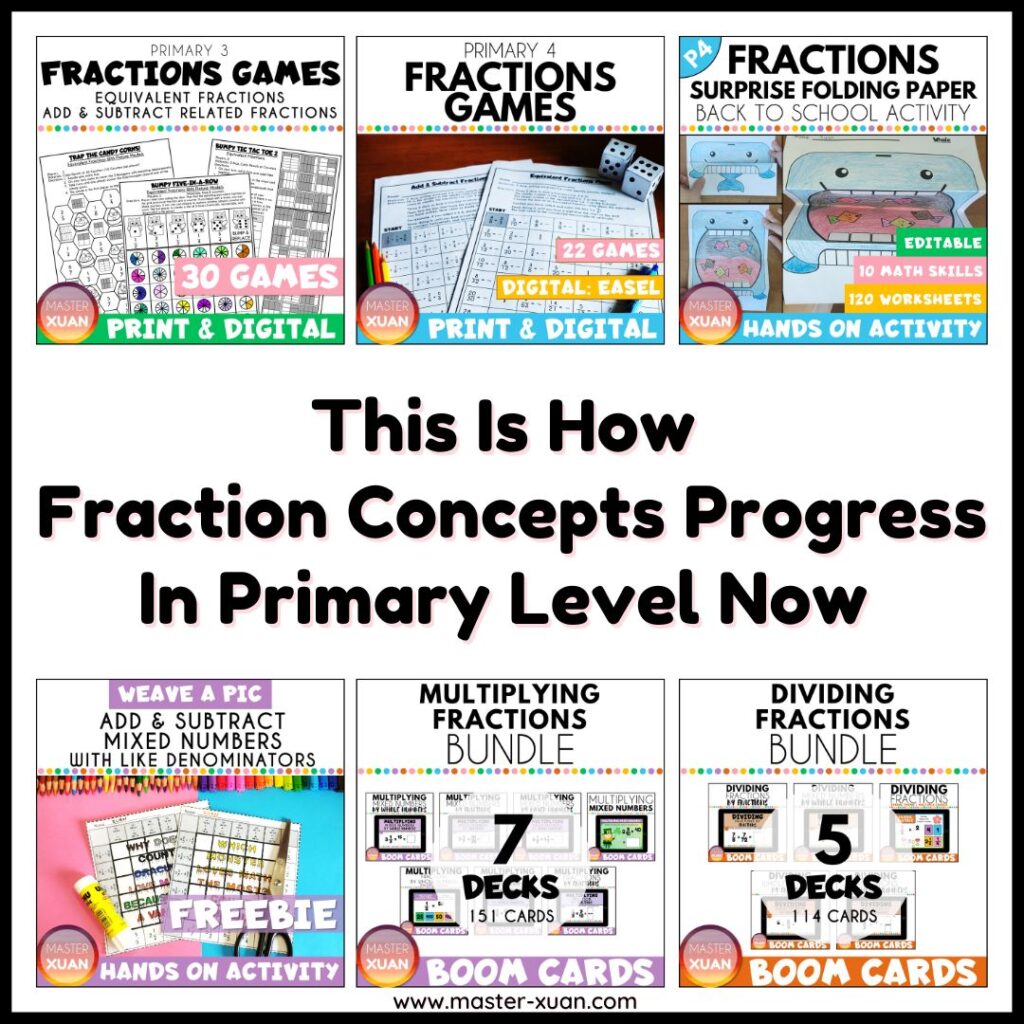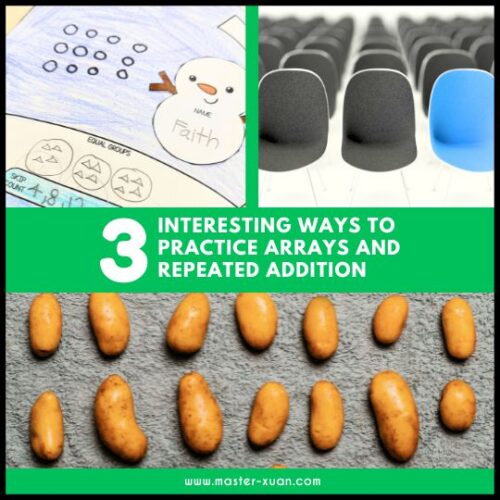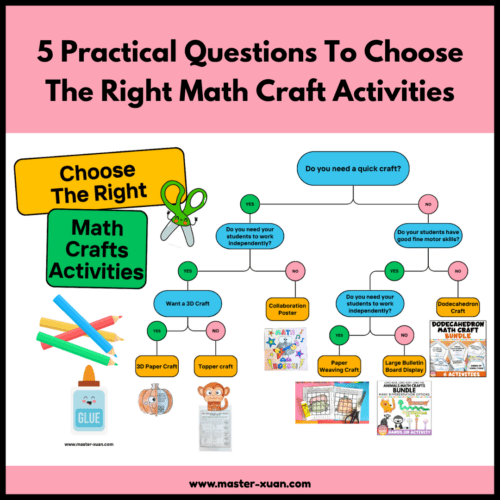In this blog post, I’ll share the timeline for teaching different fraction concepts in Singapore’s primary schools. Understanding the progression of fraction concepts will provide you with insight into the prerequisite knowledge students should have acquired. This knowledge will enable you to effectively connect prior learning with new concepts.
Keep in mind that math curriculum changes over time. As of now, the information here is valid until 2023. If there are updates, I’ll come back to keep you informed.
Any changes are likely to be about when specific concepts are introduced at different grade levels, rather than altering the overall progression of concepts.
I believe that the majority of the progression also aligns with common core state standards.
This blog post is valuable for:
- Tutors who need a refresher or a summary of the topic Fractions.
- International Educators curious about other countries’ syllabi, seeking inspiration to enhance their teaching and meet diverse student needs.
- Parents contemplating a move to Singapore, curious about curriculum differences.
- Homeschoolers wanting insights about what was expected from Singapore primary students.
- Anyone seeking inspiration to plan lessons effectively and support students in developing a robust foundation in math.
Additionally, I’ll include different fractions math resources (YouTube videos, games, crafts, practice etc.) in this blog post related to the discussed fraction concepts. I hope you find them helpful or inspiring, as they’re meant to suit various learning styles in your classroom.
For a more extensive list of resources covering various topics, you can check out 200+ Awesome Singapore Math Worksheets And Resources You’ll Want To Use.

Primary 2 Fractions
In Primary 2, based on 2021 curriculum, students will learn:
- Fraction as part of a whole
- Notation and representations of fractions
- Comparing and ordering fractions with denominators of given fractions not exceeding 12 – unit fractions and like fractions
- Adding and subtracting like fractions within one whole with denominators of given fractions not exceeding 12
Students will begin by learning what fraction is. You will need to emphasize the basic concepts that fractions are made up of equal shares. You can show students the following videos to introduce them to the concept.
YouTube video:
Students will need to know how to identify the fractions and draw different models showing how to split a whole into equal parts.
Then, students need to know how to write the fraction. In Singapore, students do not really need to know that the top number is called the numerator and the bottom number is the denominator.
After that, students will need to learn to compare fractions with pictures given for students to visualize them.
Lastly, students will learn how to add and subtract fractions with images given as references.
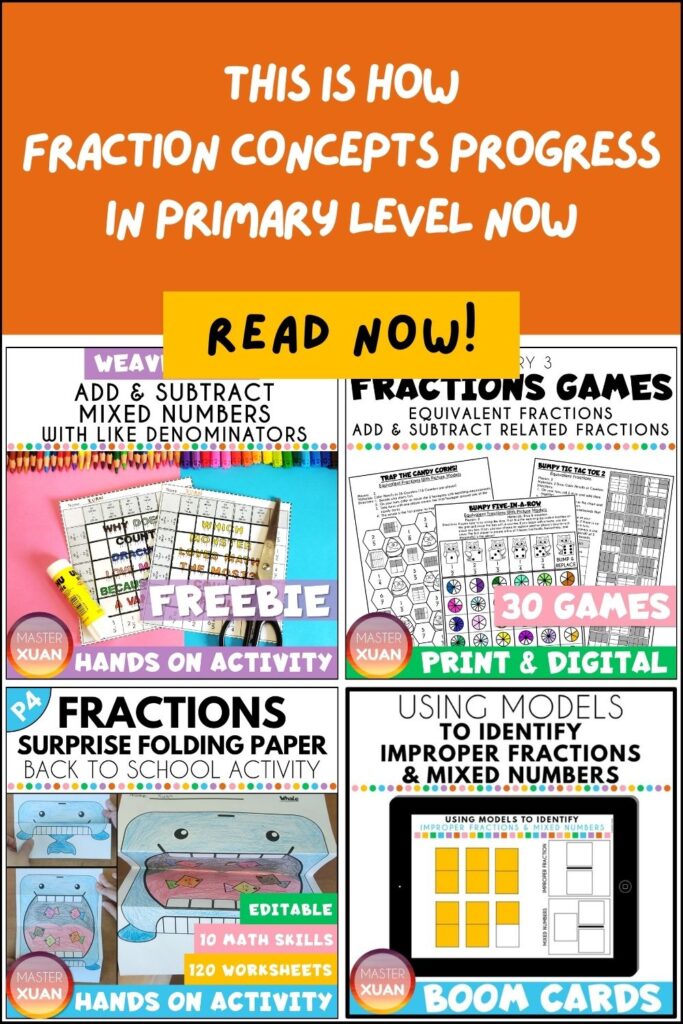
Primary 3 Fractions
In Primary 3, based on 2021 math syllabus, students will learn:
- Equivalent fractions
- Expressing a fraction in its simplest form
- Comparing and ordering unlike fractions with denominators of given fractions not exceeding 12
- Writing the equivalent fraction of a fraction given the denominator or the numerator
- Adding and subtracting two related fractions within one whole with denominators of given fractions not exceeding 12
Equivalent Fractions
Students will grasp the concept of equivalent fractions by dividing images into smaller parts. They’ll also learn how to simplify fractions using the equivalent fractions method.
Fractions on a number line
As you will realize, recognizing fractions on a number line is not actually explicitly stated in the syllabus. But yet it can be tested. And thus is a skill students need to develop.
Sometimes, they’ll need to apply the equivalent fractions concept to solve problems.
You can supplement this lesson with a helpful YouTube video: Fractions on a Number Line Song | 3rd Grade & 4th Grade.
Compare and order unlike fractions
Building on this understanding, students will use their knowledge of equivalent fractions to compare and order unlike fractions. Visual aids are a helpful way to introduce and reinforce this concept, especially considering that this is a frequently tested question.
It’s crucial for students to understand that when the numerators are the same (and greater than 1), the fractions with the smaller denominators are the larger fractions.
Add and subtract two related fractions
Moving forward, students will learn how to add and subtract two related fractions – denominators that are multiples of each other (e.g., 2 and 6). This involves making the denominators the same, applying the equivalent fraction knowledge gained earlier.
Students often have trouble subtracting from the whole number and thus require more detailed explanation and modeling.

For extra practice on equivalent fractions, addition, and subtraction of related fractions, consider using Fractions Games Maths.
Primary 4 Fractions
In Primary 4, based on 2013 math syllabus, students will learn:
1. Mixed Numbers and Improper Fractions
- convert Mixed numbers to Improper Fractions and vice versa
- compare and order whole numbers and fractions on a number line
- compare two fractions by changing to common denominators
2. Fraction of a Set of Objects
- fraction as part of a set of objects. Use pictorial model to illustrate the concept of fraction of a quantity
3. Addition and Subtraction
- Adding and subtracting fractions with denominators of given fractions not exceeding 12 and not more than two different denominators
- solving up to 2-step word problems involving addition and subtraction
Mixed Numbers and Improper Fractions
If you want some math crafts to review Mixed Numbers and Improper Fractions:
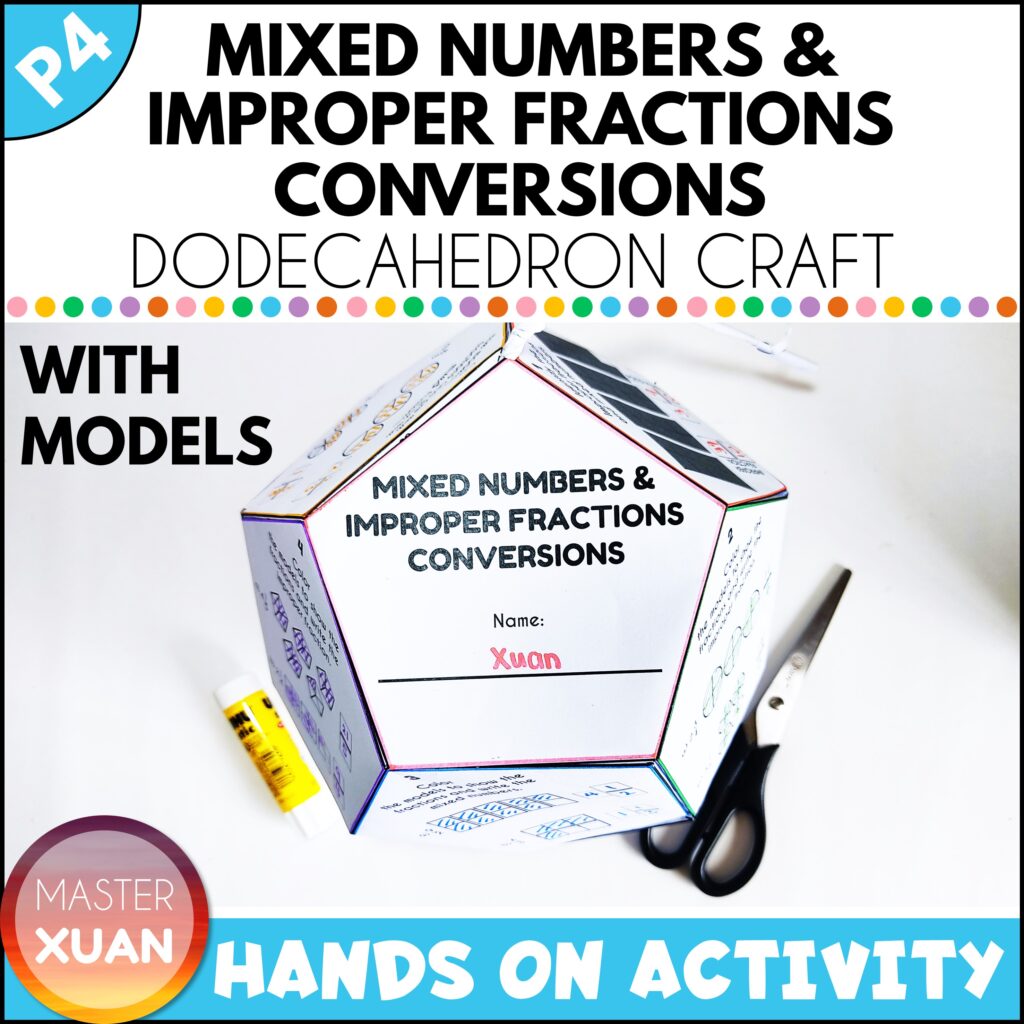
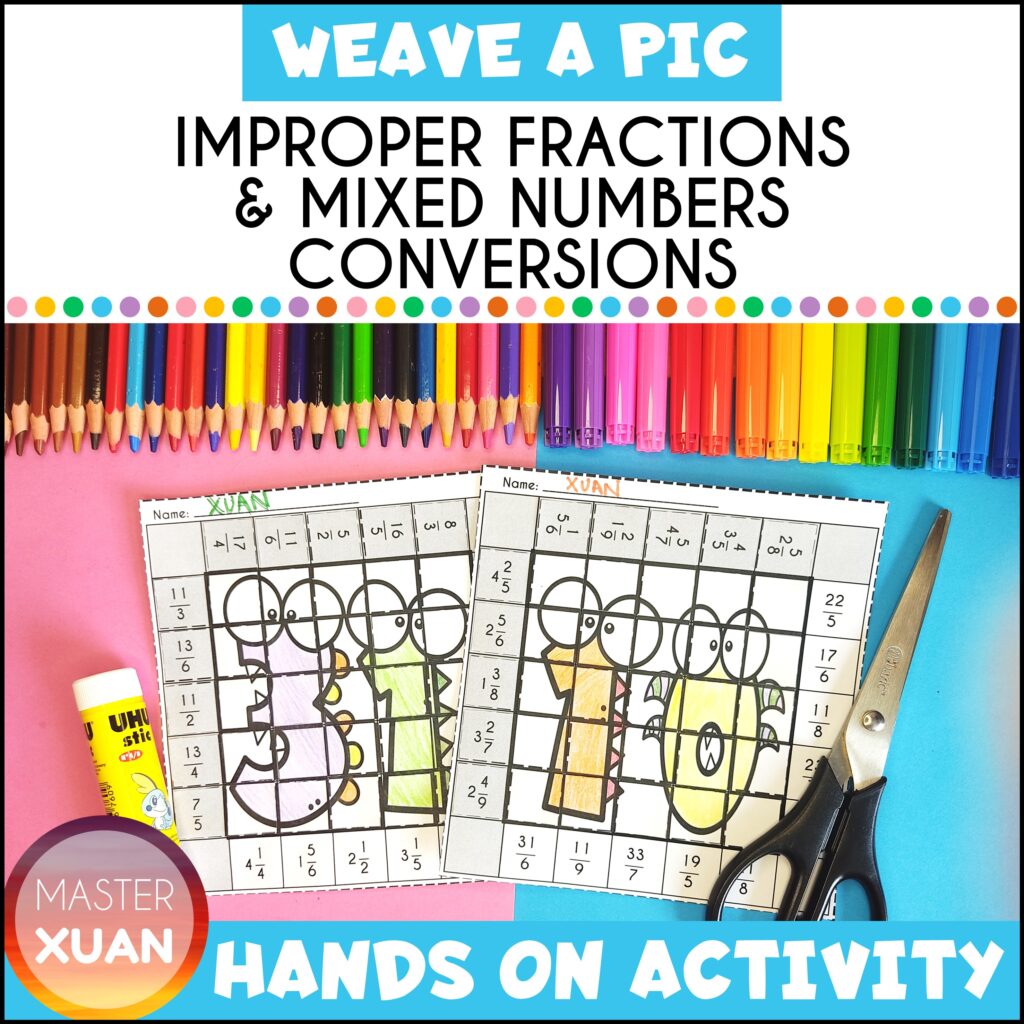
This practice with visual models is popular with teachers: Improper Fractions To Mixed Numbers With Pictures Worksheet. There are 3 versions that cater to your different needs: Printable Task Cards Version, Easel by TpT Digital Activity, Boom Cards.
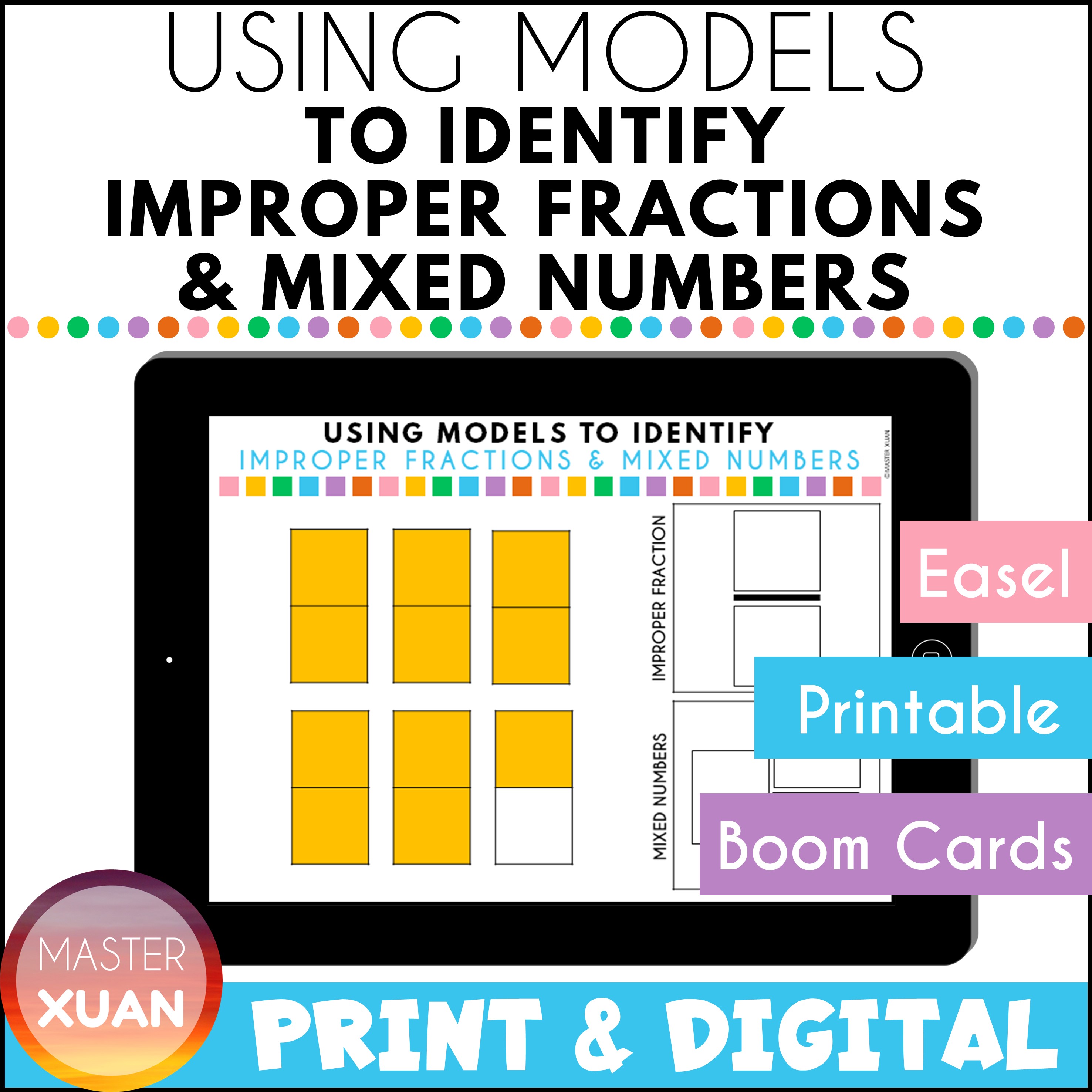
Add and subtract unlike fractions
Students will learn how to add and subtract unlike fractions. Students will learn to find the equivalent fraction for both fractions before adding and subtracting. Once students have learnt it, you can give them more practice through Adding And Subtracting Fractions Hands On Activities and have fun in different ways with Games For Fraction.
Fraction of a Set of Objects
Finally as an introduction for multiplying fraction learn in the next year, students will learn Fraction of a Set of Objects. Here’s the resource to supplement this: Fractions Of A Set Grade 4.
Once you learn everything, you can review all of the primary 4 fraction concepts with these test prep. By this stage questions that appeared in exams no longer provide visual guides.
- 4th Grade Fractions Review (Set 1)
- Fractions Test for 4th Grade (Set 2)
Or you can use these Fractions Hands On Activities to help you understand your students better as they practice their fraction concepts.
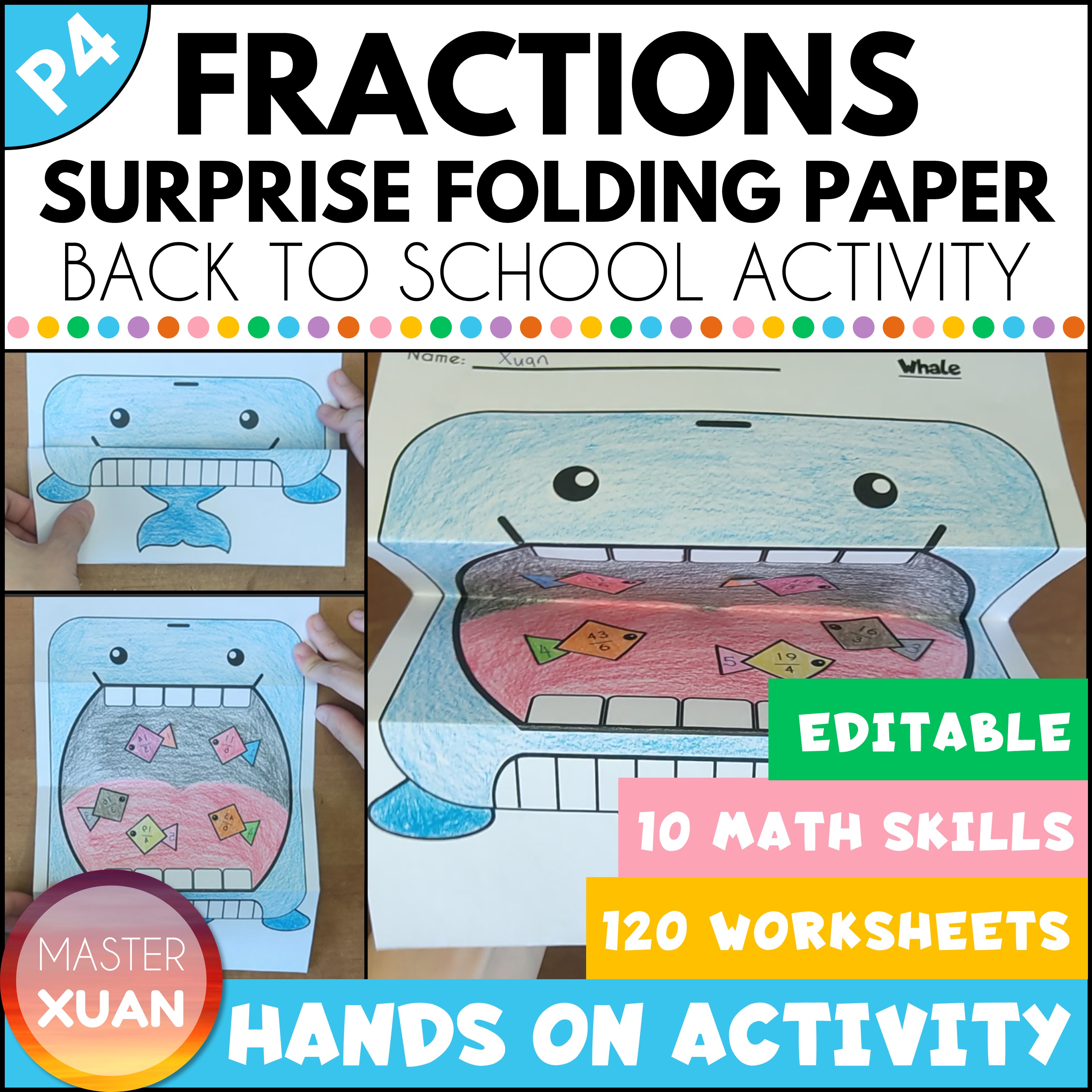
When they move on to learn decimals, students will learn how to convert fractions to decimals when the denominator is a factor of 10 or 100. Students will also learn how to convert decimals to fractions.
Primary 5 Fractions
In Primary 5, based on 2013 math syllabus, students will learn:
1. Fraction and division
- dividing a whole number by a whole number with quotient as a fraction (divide a whole number by a 1-digit whole number and write the answer as a fraction)
- converting fractions to decimals using long division
2. Four Operations
- adding and subtracting mixed numbers
- multiplying a proper/improper fraction and a whole number without calculator
- multiplying a proper fraction and a proper/improper fractions without calculator
- multiplying two improper fractions
- multiplying a mixed number and a whole number
- solving word problems involving addition, subtraction, and multiplication
Converting fractions
Students are required to grasp the skill of converting fractions to decimals, specifically when dealing with denominators that are not factors of 10, 100, or 1000. In these cases, the resulting decimals will be recurring. To arrive at the answer, students will apply their understanding of rounding off and utilize long division.
It’s worth noting that in the same academic year, students will also learn the conversion from fractions to percentages when they start learning percentage.
Adding and subtracting mixed numbers
Students can practice adding and subtracting mixed numbers. Most students have issues with regrouping and hence Addition Of Mixed Numbers With Regrouping and Subtraction of Mixed Numbers with Regrouping are great visual practice.
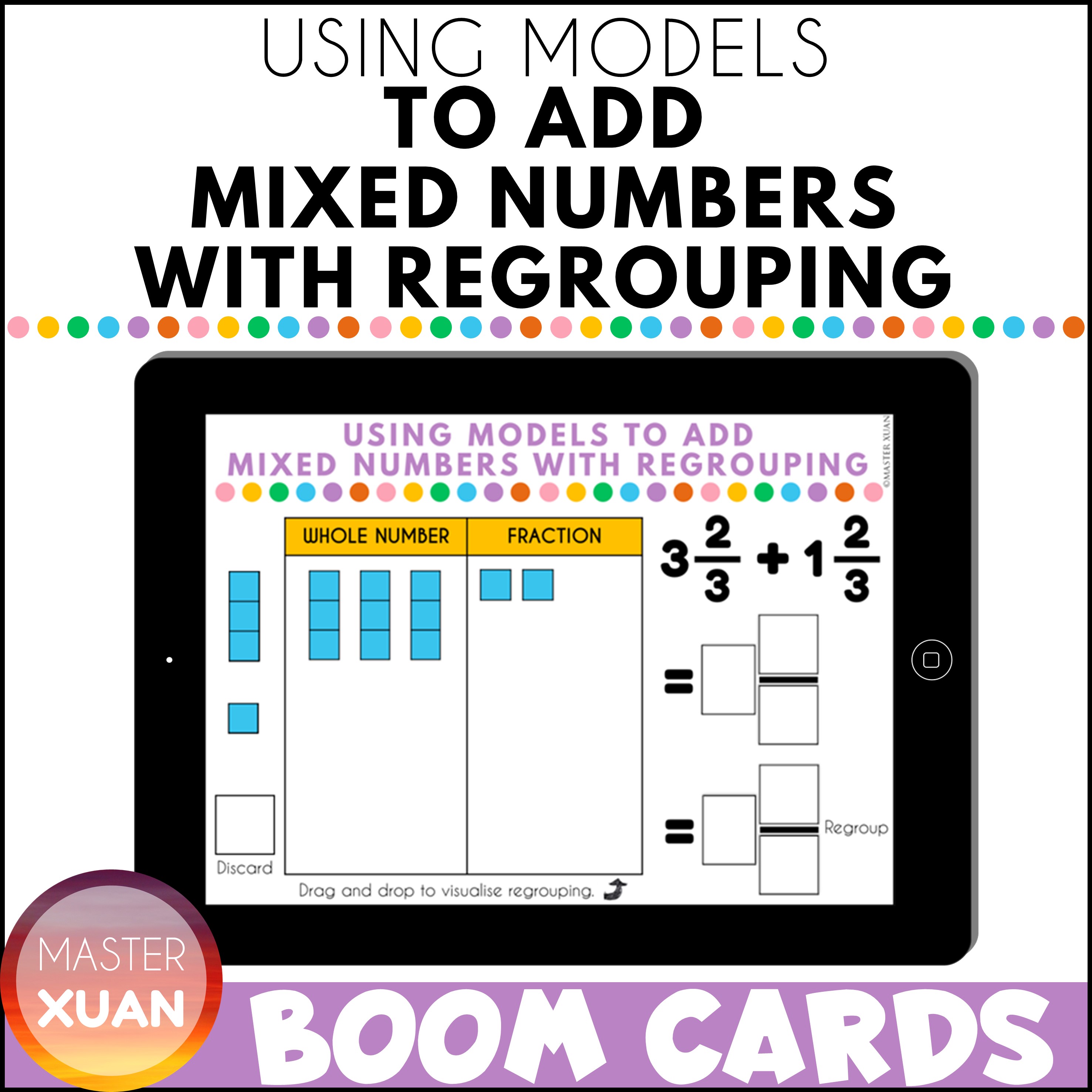
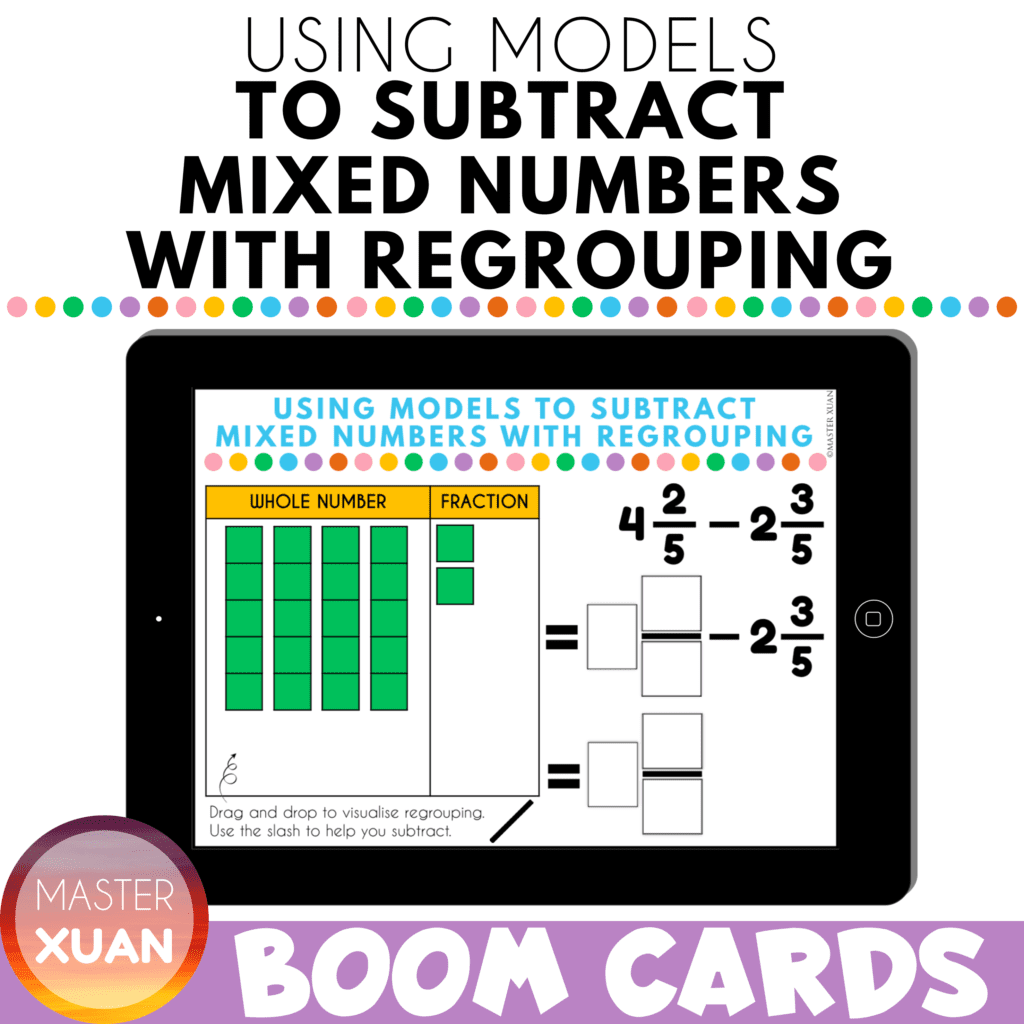
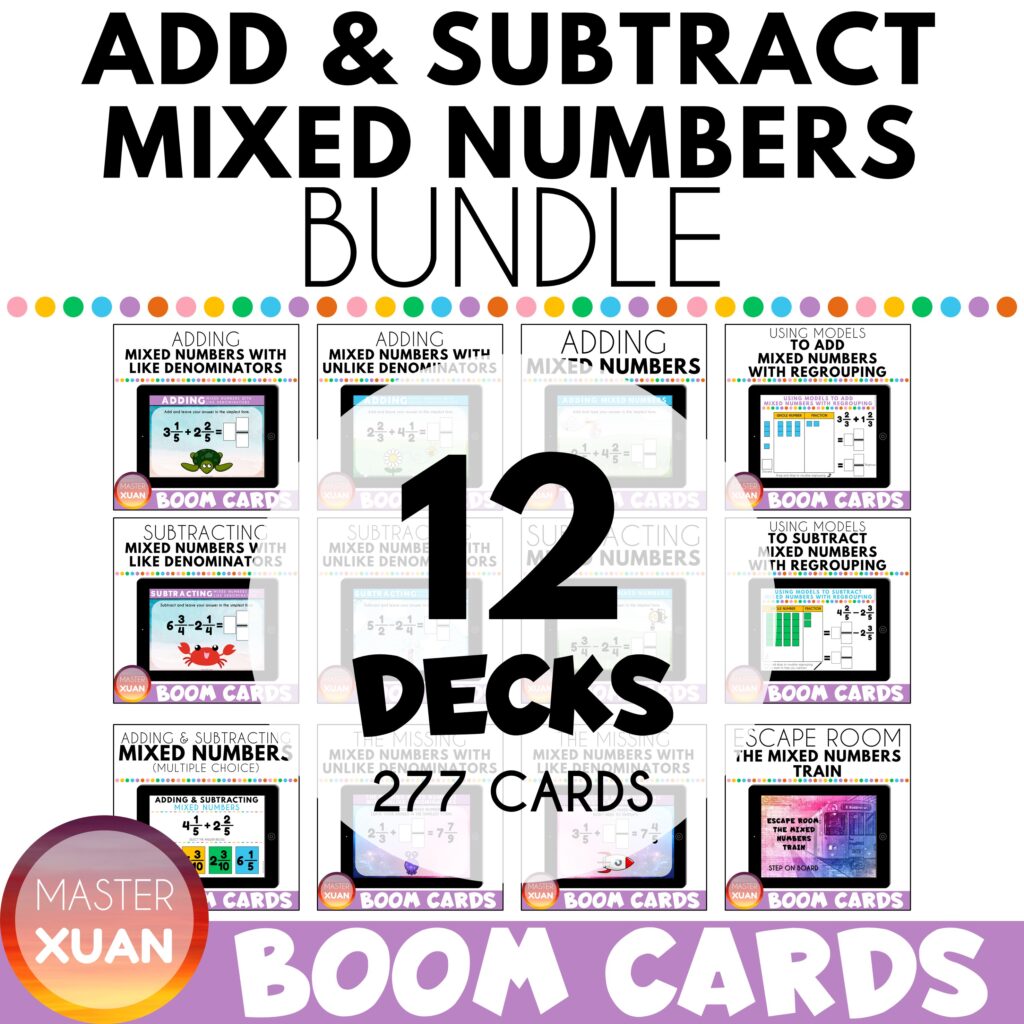
If you want more practice, you can buy the money-saving bundle: Mixed Numbers Adding And Subtracting. Or if you want to have a taste of it before buying, try Adding & Subtracting Mixed Numbers FREEBIE!
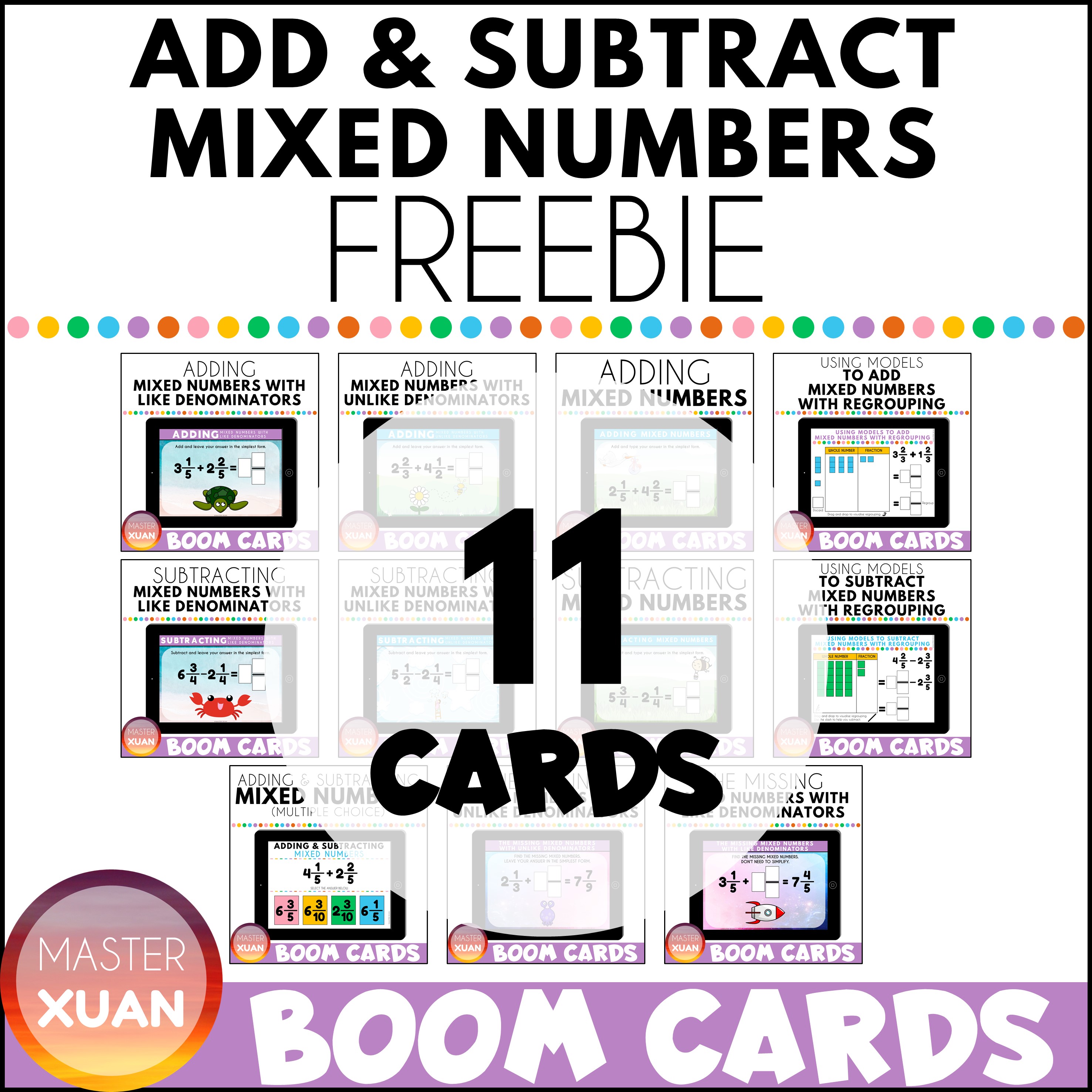
Here is another hands on activity freebie: Adding And Subtracting Mixed Numbers With Like Denominators With Regrouping.

Multiplying fractions
Another new concept that students need to learn is multiplying fractions. Similarly, you can get ample practice with Multiply Fractions Cross Canceling Bundle. Then have fun with a scavenger hunt – Multiply Fractions Game and math craft – Multiplying Fractions Hands On Activities.
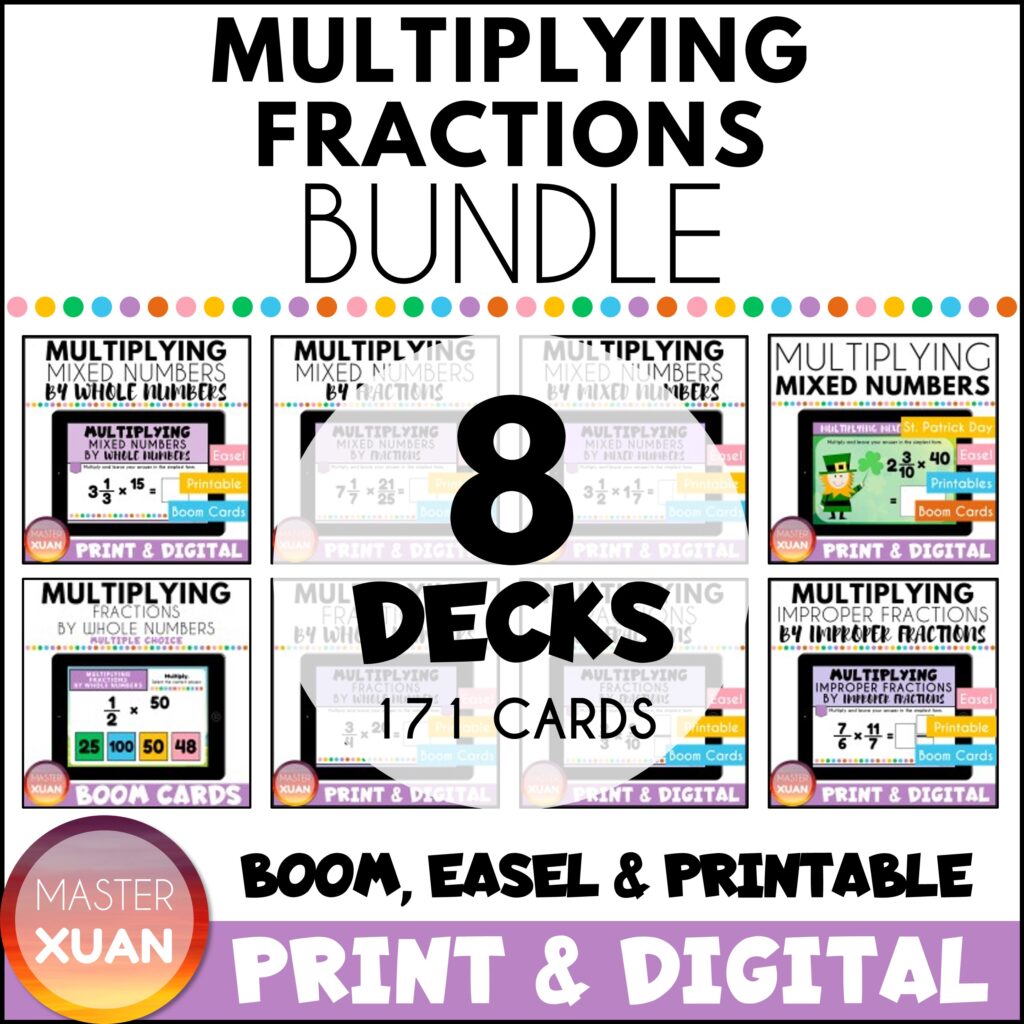
Once students learn all the fraction calculations for primary 5, it is time to practice fraction word problems.
Fractions Word Problems
Fraction word problems start to hold a large weightage in the exams and there are many concepts that students need to know.
Simple word problems that include multiplication of fractions may come up in Paper 1 (where students can’t use calculators).
You can introduce most of the fraction word problems that might come up with Paper 2 with this math worksheets: Word Problems On Fractions. It includes examples and additional practice so that students can master the specific question types.

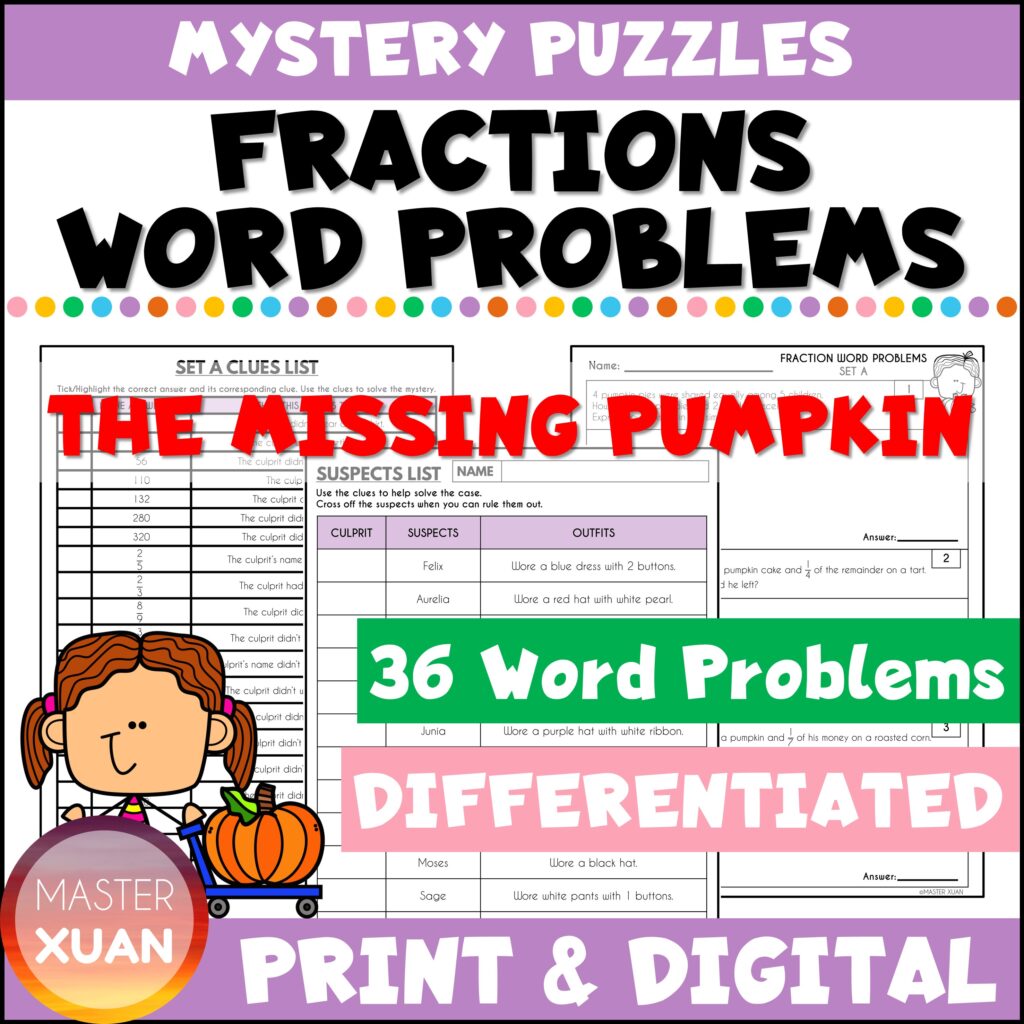
There can never be enough fraction word problems practice! You can review them with these engaging Fractions Word Problems Worksheets as students solve for the culprit by solving word problems.
The above two resources are no prep and differentiated, with answer keys provided for easy referencing.
Related Read: 5 Popular Primary 5 Fraction Word Problems You Need To know
The last concept to learn in Primary 5 is Interpreting Fractions As Division. This is to prepare students to learn how to divide fractions in primary 6.
Primary 6 Fractions
In primary 6, based on 2013 math syllabus, students will learn:
- dividing a proper fraction by a whole number without calculator
- dividing a whole number/proper fraction by a proper fraction without calculator
- solving word problems involving the 4 operations
Dividing fractions
Let your students have ample practice with the Fractions Division Problems bundle. Then review them with Weave A Pic – Dividing Fractions Hands On Activities.

The word problems in primary 6 can be more complicated than primary 5 but many primary 5 word problems will still be tested. Word problems in paper 1 may include division of fractions.
Final Thoughts
In conclusion, understanding the progression of fraction concepts in the Singapore primary curriculum provides valuable insights for educators.
The detailed breakdown from Primary 2 to Primary 6 allows for effective lesson planning and alignment with learning expectations.
The inclusion of additional resources, such as YouTube videos, games, worksheets and crafts, aims to enhance the learning experience, accommodating various learning styles. So do check them out (I have more in my TPT store), especially the freebies (I know you will love them)!
Join my newsletter to get the exclusive freebie!


